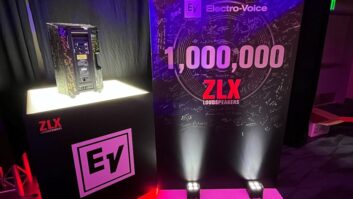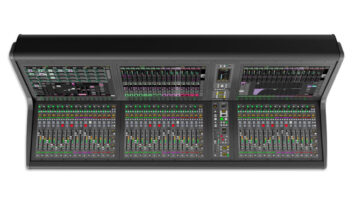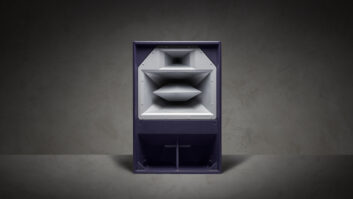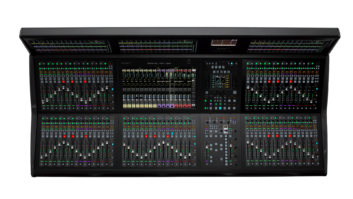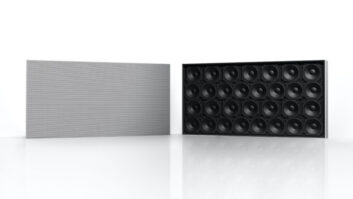INDIANAPOLIS, INDIANA – OCTOBER 2009: Butler University’s Hinkle Fieldhouse in Indianapolis is the antithesis of the modern NBA showplace. It’s gritty. It’s not air-conditioned. The seats, or rather bleachers, are uncomfortable at best. But with an 80-year history at the epicenter of both high school and college basketball in a state that is practically synonymous with the sport, Hinkle is very well-loved. In fact, it is the architectural inspiration for both Conseco Fieldhouse (Indiana Pacers) and Lucas Oil Stadium (Indianapolis Colts). The spirit of aspiration that is so bound up with Indiana basketball was documented in the film “Hoosiers,” the climax of which was filmed in Hinkle and recounts an epic underdog story that actually unfolded at Hinkle in 1954.
But age and grit of the Hinkle variety, though they may warm the heart of a true fan, seldom come with good,
<!–more–>or
even adequate, sound reinforcement. Butler University
athletic director Barry Collier was acutely aware of the fieldhouse’s shortcomings and hired AV consultants Chip Sams and David Wright to right some very old wrongs. Sams used contemporary technology to deliver a very distributed system for mids and highs. Moreover, he accomplished what seemed impossible: Hinkle now has tight, robust bass, thanks to four directional arrays of Danley TH-MINI subwoofers.
Sams, of William Sams Acoustics Inc. explained how dire the acoustical situation was. “Hinkle is a huge room that, before we went to work on it, produced a six-second reverb! Worse,” he continues, “most of the audience sits at either end of the building, backed up against tall brick walls with glass windows. No magical loudspeaker technology exists that can discriminate between the audience and all those reflective surfaces from such a low angle of incidence.”
Vestiges of several older systems were still in place when Sams made his first assessment. Most recently, large format horns with twelve-inch woofers hung in a pseudo-line array from below the scoreboard and, from the look of it, promised to deliver only a small fraction of their direct energy to actual human ears. Butler’s hopes for the new system were for articulate announcements, convincing pep band reinforcement, and the ability to play recorded music with clarity and definition.
Sams knew that the old strategy of centrally-located speakers would never work in Hinkle. He needed a distributed system, but the age of Hinkle made that challenging. “The ceiling is framed by arching structural beams high above the floor,” he explained, “but because the bleachers don’t retract, we couldn’t get a lift that would work. Above the main floor, only the tallest personnel lifts could reach the beams, but the access points to the fieldhouse would not permit such a large lift to negotiate its way into the building. Our only solution was to have climbers mount the speakers.” In addition, the load limits on the beams were poorly defined, forcing him to err, as much as possible, on the light side.
Sams used a Media Matrix Nion DSP to feed a bank of Lab.gruppen C48:4 and C28:4 power amps in support of distributed Frazier horn-loaded CAT 76 and 79 coaxial speakers and four directional subwoofer arrays of four Danley TH-MINI subwoofers each. “We placed the Fraziers so that their direct energy would only hit seats, because that’s the acoustic absorption we can count on,” said Sams. “We used the Media Matrix to allow staff to turn sets of speakers on or off, depending on the number of fans in attendance. That way, when the nosebleed seats are empty, we’re not exciting those seats. That solved the intelligibility issue, but the Fraziers only deliver useful output down to 125 Hz, which, by itself, would generate some pretty anemic-sounding music.”
Budget pressures threatened to shortchange the low-end, but fortunately the best subwoofers for the job were also affordable. “We selected the Danley TH-MINI as our array element,” he said. “They are compact, lightweight, and extremely efficient, especially for their small size.” Sams placed four end-fired arrays around the scoreboard with appropriate internal delays to effect directionality. That way, very little bass would be aimed directly at the ceiling, and the system would sound tighter and less cavernous.
Acoustical consultant David Wright, of Wright Consulting Associates, stepped in to tone down the reflections in the room, independent of any reinforcement solution. Because Hinkle Fieldhouse is on the national registry of historic places and because of the importance of its aesthetic, Wright worked closely with university architects to craft a solution that would effectively reduce reflections without detracting from the interior appearance. In the end, two rows of MBI Lapendary panels just above the sidewall seating produced the right acoustical damping without compromising the look of “Indiana’s Basketball Cathedral.”
The only hiccup came when the system first powered up. “The bass was complete mush,” said Sams. “It was obvious to me, and some quick investigations revealed, that the delays were set improperly in the subwoofer arrays. We corrected them and fired it back up. The results are an astounding improvement over the old system. Announcements are completely comprehensible, and music reinforcement is full, robust, and punchy.”
ABOUT DANLEY SOUND LABS Danley Sound Labs is the exclusive home of Tom Danley, one of the most innovative loudspeaker designers in the industry today and recognized worldwide as a pioneer for “outside the box” thinking in professional audio technology. Danley Sound Labs • www.danleysoundlabs.com

